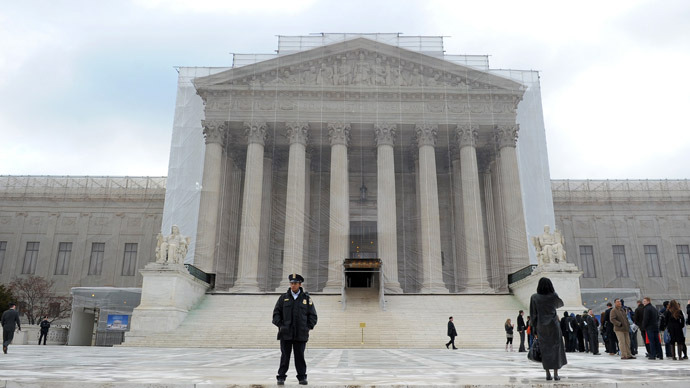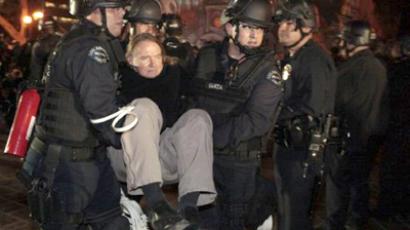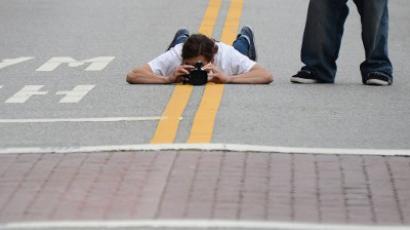Activist arrested for wearing ‘Occupy Everything’ jacket

If you’re planning a trip to Washington, DC, you might want to choose your wardrobe wisely. A federal judge says that a Florida man was not wrongly arrested for wearing an “Occupy Everything” jacket inside the Supreme Court.
Fitzgerald Scott of Tampa, Florida was inside of the Supreme Court building last year when a guard told him he had to do something about the homemade jacket he was wearing. The slogan that was painted on his coat, “Occupy Everything,” constituted a form of demonstration, the security guard said.
According to court papers, Supreme Court Police officer Justen Freeman told Mr. Scott on Jan. 20, 2012 that the words “Occupy Everything” weren’t allowed inside of the building. His coat, he said, was considered, “a sign, a demonstration basically,” which would go against laws that limit First Amendment-granted rights within the building itself.
“District of Columbia courts have repeatedly found that the Supreme Court with the except of the sidewalks near the street on the perimeter of the Court grounds . . . is a nonpublic forum for First Amendment purposes,” US Attorney Ronald Machen wrote in his ruling last week. In other words, while political protests are absolutely allowed outside of the Supreme Court’s entrance, any sort of action deemed a demonstration within its walls are not. Even a jacket, noted the court, would be “designed or adapted to bring into public notice a party, organization or movement,” which simply isn’t allowed inside of the country’s highest court.
Although Mr. Scott was not engaged in any sort of protest aside from wearing his coat while viewing a museum exhibit inside the building, outside the courthouse around one dozen Occupy Wall Street demonstrators were being arrested. After a brief back and forth, Freeman refused the officer’s demands to either cover-up or exit the building. He was arrested on the charge of unlawful entry, which was subsequently dismissed by the US Attorney’s Office.
Mr. Scott didn’t stop when the charges did, though, and tried to file a $1 million dollar claim against the federal government, as well as having his illegal arrest expunged from his record. Last week in court, a federal judge told him that he was out of luck.
Machen ruled last week that Mr. Scott did not state a claim which would require the US to grant relief, and even added that the Occupy protester got off easy. Not only was the Supreme Court officer in the right by removing the man, but additional charges could have easily been tacked on due to a possible violation of another law, the Display Clause.
“It also bears noting that, while plaintiff was initially charged with violating the unlawful entry statute, his conduct also violated the Display Clause of section 6135, and he could just as easily have been charged with an independent violation of that statute as well,” the Justice Department wrote.
“The jacket the plaintiff was wearing at the time was emblazoned with the words ‘Occupy Everything’ at the same time that there was a significant demonstration by the Occupy movement on the Supreme Court plaza, and thus was certainly a ‘device designed or adapted to bring into public notice a party, organization or movement,” he adds, referencing the Display Clause.
“District of Columbia courts have recognized repeatedly that the Display Clause is a reasonable measure ‘to permit the unimpeded access and egress of litigants and visitors to the Court, and to preserve the appearance of the Court as a body not swayed by external influence.”














